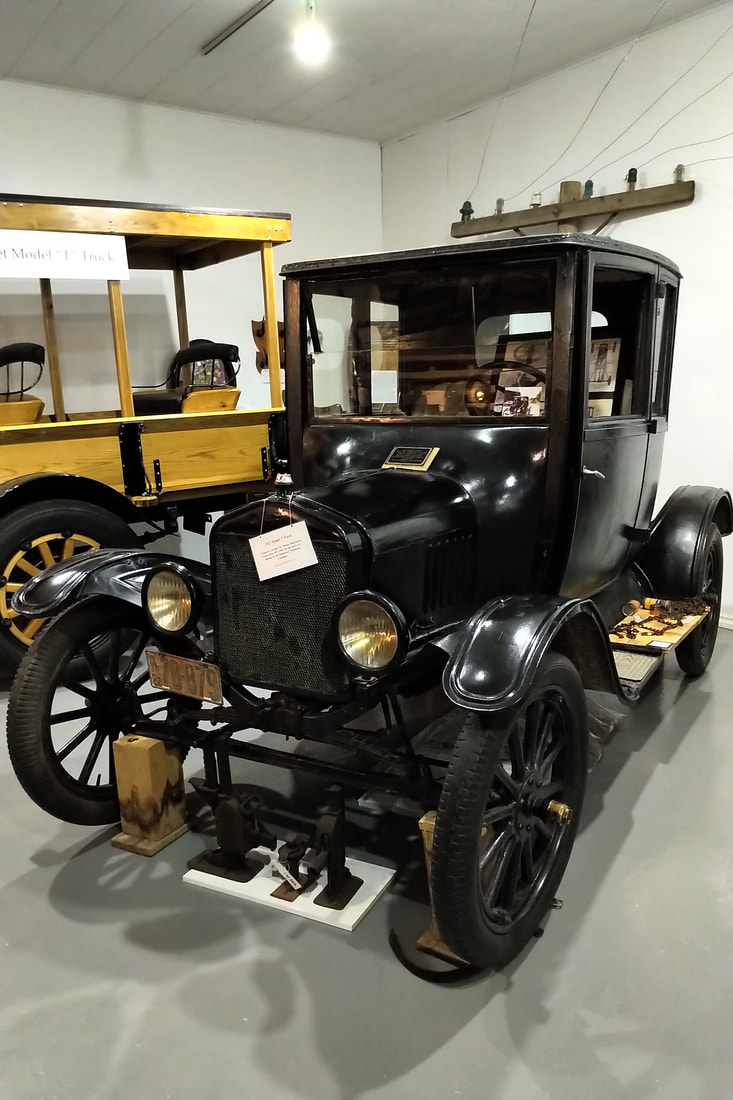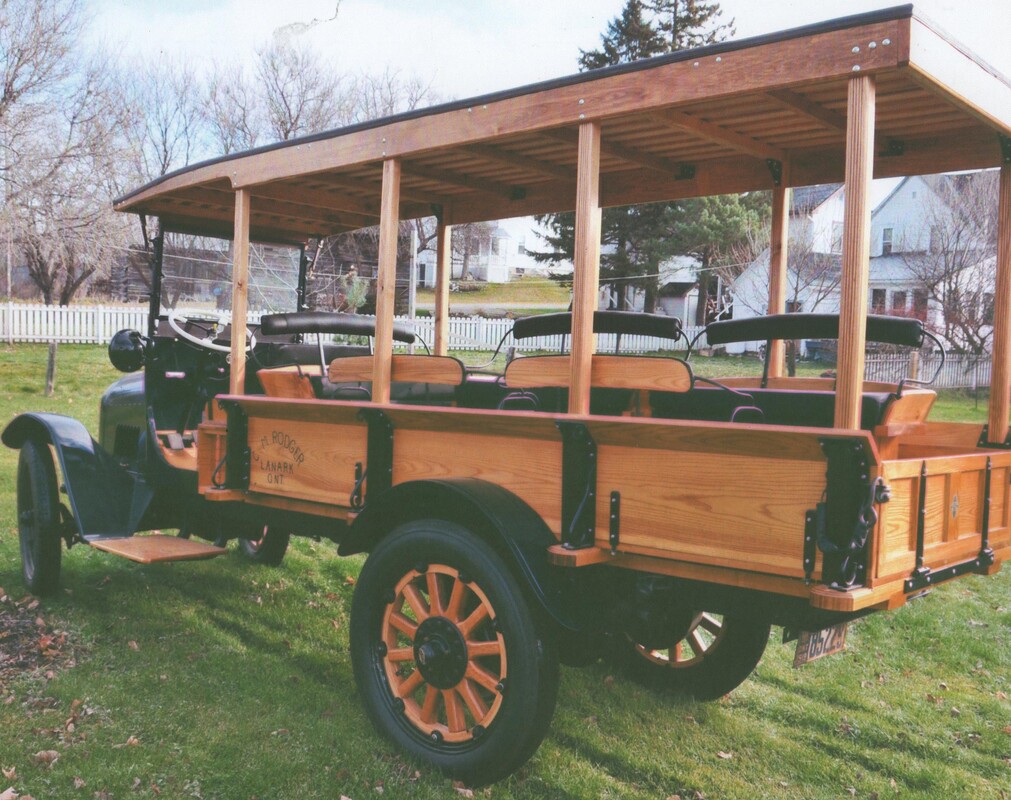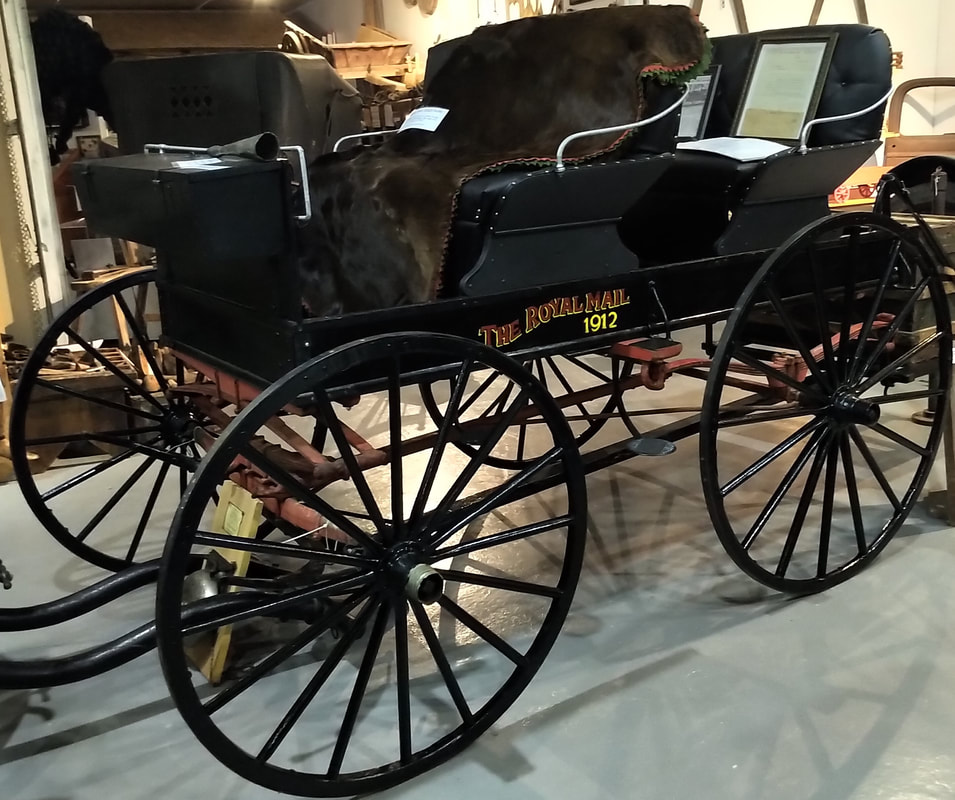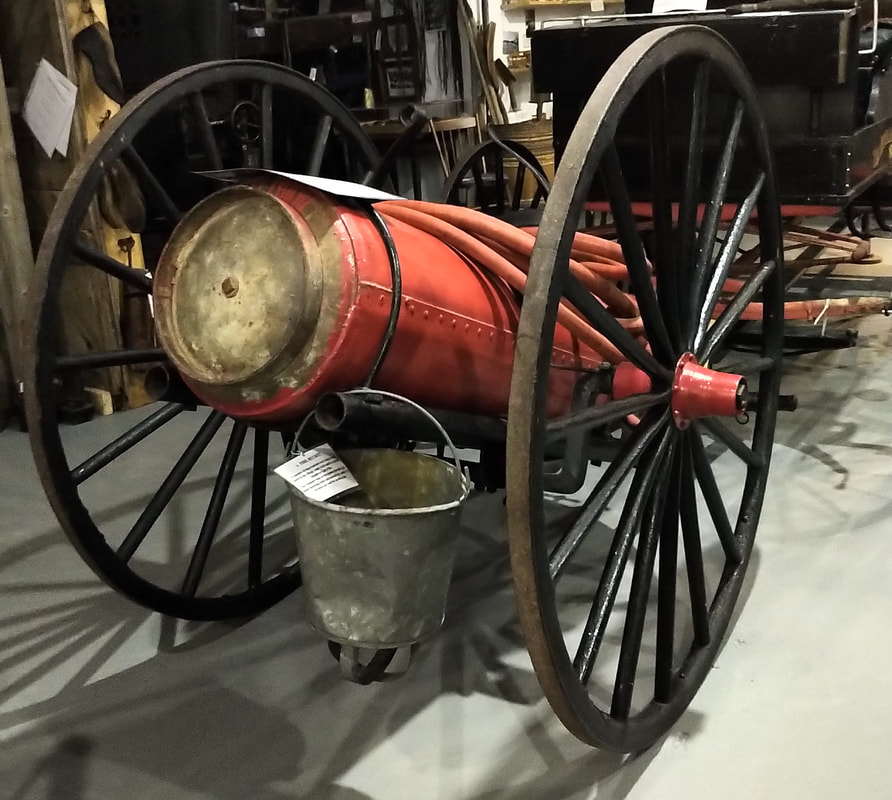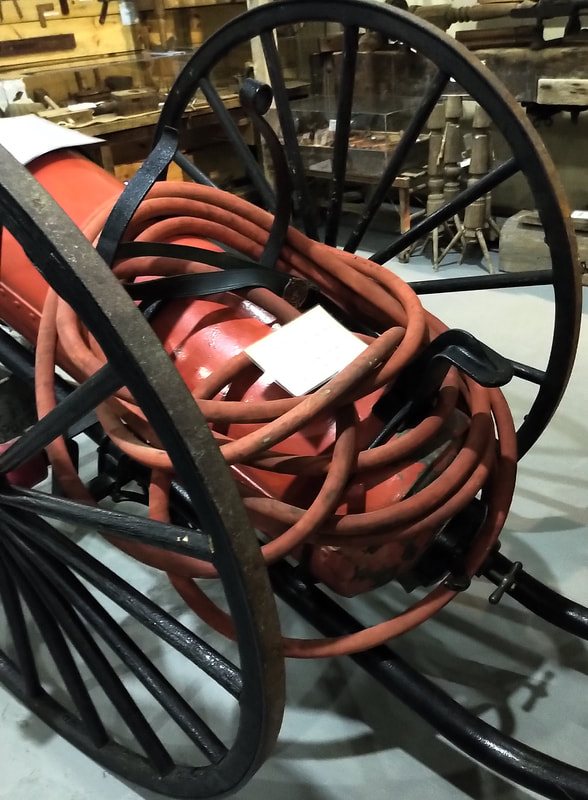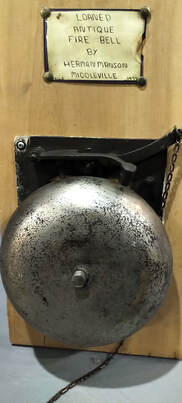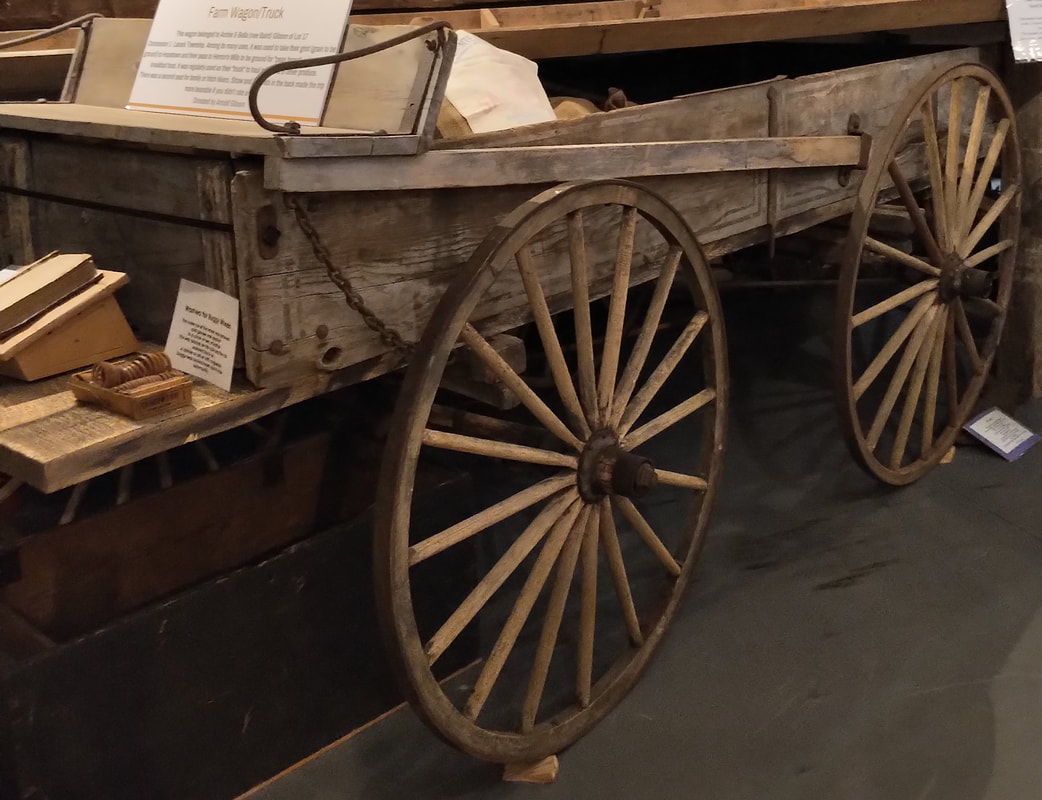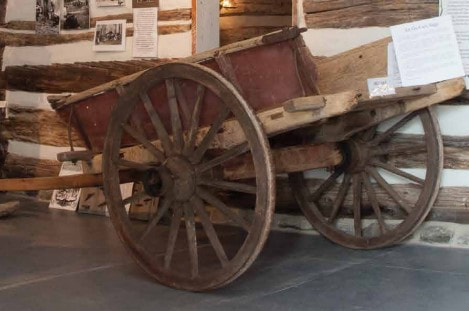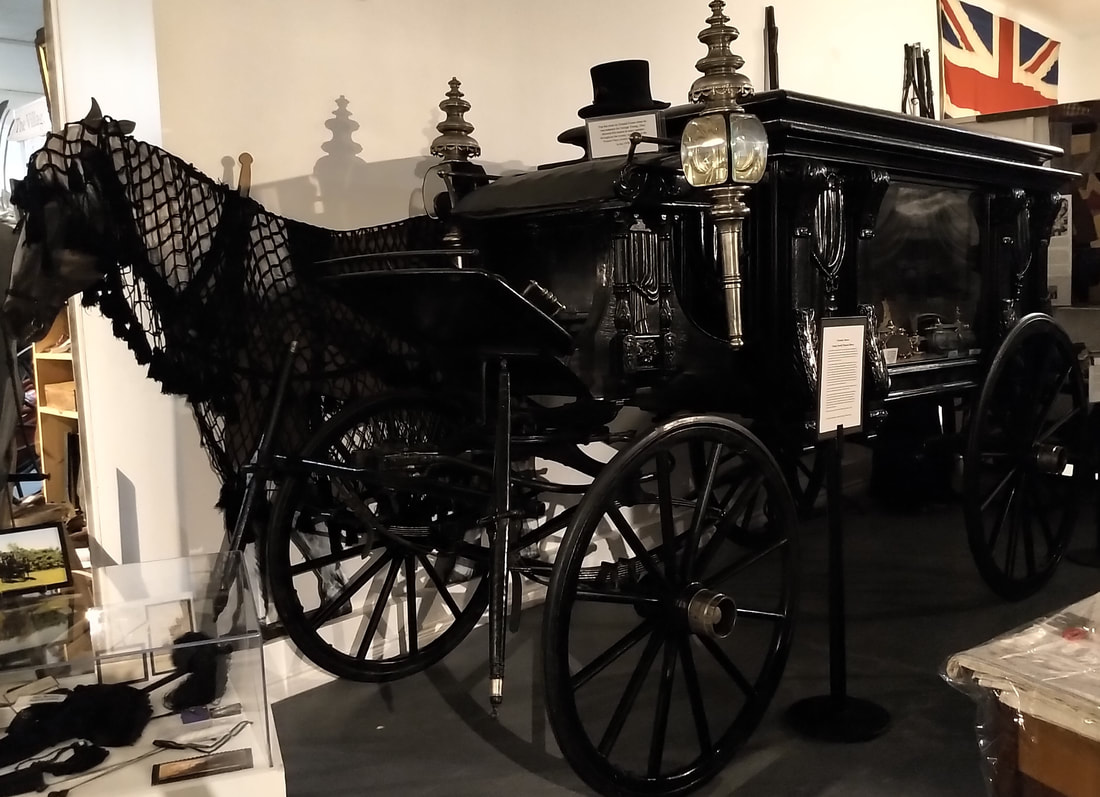|
The Middleville and District Museum is home to many modes of transportation. From large to small, these vehicles have moved people from one place to another for generations. Most of them have been replaced by fancier versions, but these specimens pay tribute to the ingenuity of our ancestors who needed to get from here to there. Enjoy a trip down memory lane in the photos of these historical vehicles. Then drop by the Museum to get a closer look. This 1922 Model T Ford Car owned by Arnold Gibson of Hopetown is popular with visitors to the Museum. Arnold drove this vehicle during the years from 1932 to 1954 when he worked as a lineman for the Hopetown Telephone Company. This 1918 Chevrolet Model ‘T’ Truck is one of 900 built. The chassis was often purchased and the owner could build a vehicle body to suit their own particular needs. Some were made into fire trucks, delivery trucks and medical vehicles. Clive Rodgers bought and began to restore this chassis in 2002. The next eight years were spent sourcing parts and in some cases making them. The completed project resulted in a truck that resembled the one pictured in an advertisement for this vehicle in 1918. The Royal Mail Stage was used for the ‘Conveyance of His Majesty’s Mails’ in 1912 between Lanark and Middleville. This Stage was driven by John E Blackburn. Letters were collected by mail drivers on rural mail routes and delivered to the Middleville Post Office. The Royal Mail Stage was used to transport these letters in locked mailbags to the Lanark Post Office. The Stage was replaced by a cutter in winter months. A second seat could carry passengers and some parcels for a small fare. A trunk attached to the back carried the mailbags. Villagers could listen for the horn sounded as the Mail Stage approached its destination. 1919 McLaughlin Cutter Made by McLaughlin Carriages, Brockville Cutters were smaller and lighter vehicles than sleighs. A buffalo robe and a warmer drawer for inserting heated bricks or coals to keep feet warm were necessities for any length of trip. This early Fire Vehicle was not used as a mode of transportation, but nevertheless, was of great importance to the community. A 60 gallon Fire Extinguisher on wheels was bought in 1930 and was drawn by manpower. Soda and sulphuric acid were mixed with water to produce the chemical that forced the water out of the nozzle on the end of the hose. This was considered a huge step up from previous fire fighting equipment in the village which consisted of special pails and ladders kept in the local stores and Church shed. The pails had an extra handle on the bottom and thereby could not be used for any other purpose to ensure they were always ready in case of fire. This Farm Wagon, belonging to Archie and Bella (Baird) Gibson of Lot 17, Concession 1, Lanark Township, was used to take grist to Hopetown mill and peas to Herron Mills to make pease brose. The wagon was also used to haul milk cans and as a general vehicle to carry other cargo and passengers on a second seat. Carts drawn by oxen were used for a variety of jobs. In one case, the Reid family, of Lanark Township, used one to travel all the way from Middleville to Sarnia, Ontario in 1844. The trip probably took about 40 days one way on a bumpy trail. The Museum's ox cart is from the mid 1800’s and originally came from the Rodger farm in Arklan. Restored and donated by Bob Reid of Middleville. Young's Hearse from the late 1800's was owned and operated by the Young Funeral Home in Lanark Village. It was used for funerals throughout Lanark Township. A team of all black horses with black draperies were used to pull the hearse. It had buggy wheels for most of the year and a set of runners for winter funerals. A child's funeral would have white horses pulling the hearse. Long lines of buggies carrying family, friends and neighbours would follow the hearse in a long procession along the roads to the burial ground or cemetery. The hearse is owned by descendants of the Young family originally from Rosetta and is on display at the Museum. The Museum is a great place for vehicle enthusiasts to visit and admire these historical gems. Plan to drop by and see them up close and marvel at the detail of the craftsmanship. Hope to see you soon.
0 Comments
Leave a Reply. |
AuthorThis journal is written, researched, and maintained by the volunteers of the Middleville Museum. |
